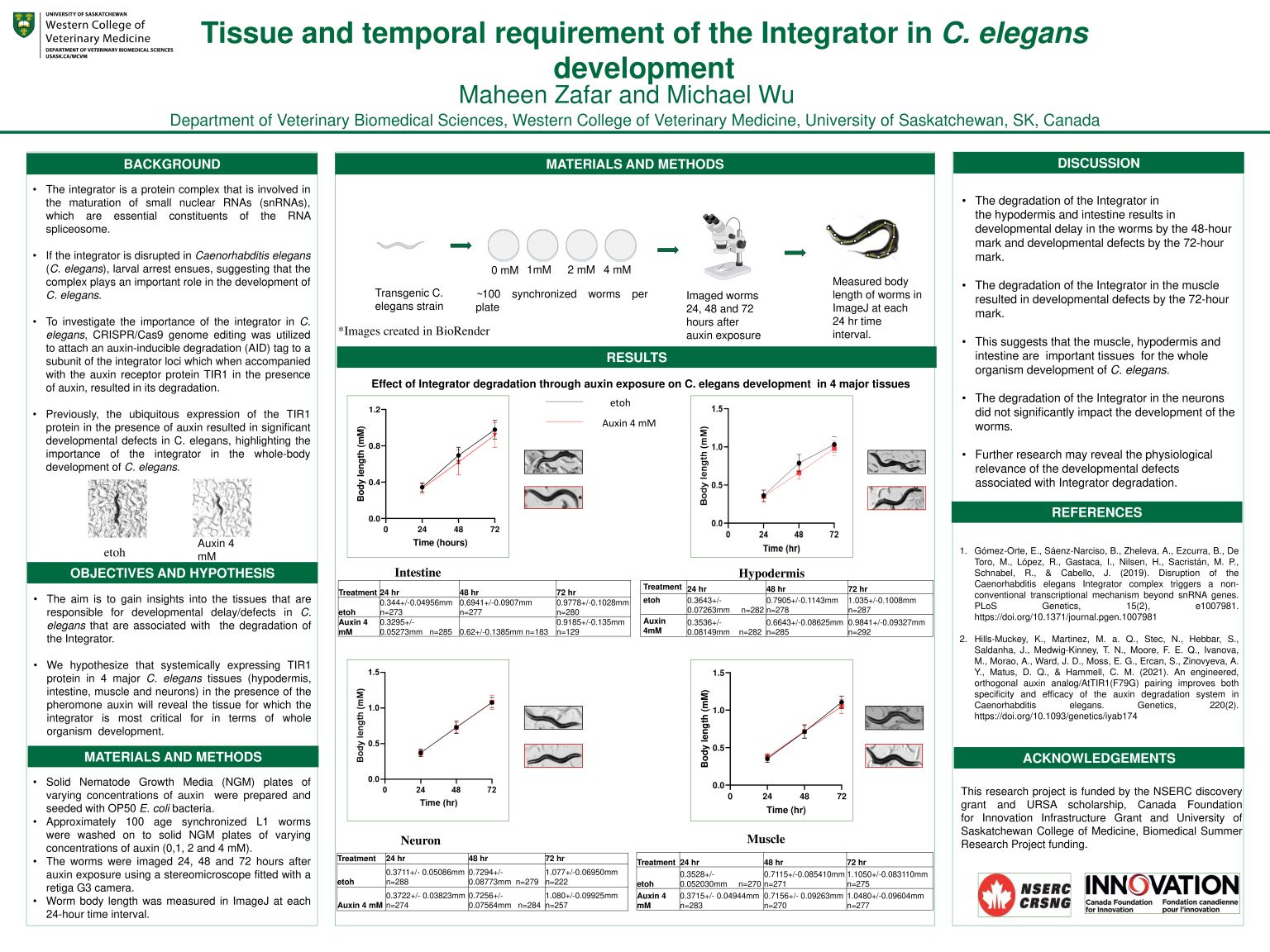
Tissue and temporal requirement of the Integrator in C. elegans development
Maheen Zafar
The integrator is a protein complex that is involved in the maturation of small nuclear RNAs To investigate the importance of the integrator in C. elegans, CRISPR/Cas9 genome editing was utilized to attach an auxin-inducible degradation (AID) tag to a subunit of the integrator loci which when accompanied with the auxin receptor protein TIR1 in the presence of auxin, resulted in its degradation. Previously, the ubiquitous expression of the TIR1 protein in the presence of auxin resulted in significant developmental defects in C. elegans. In this study we hypothesized that systemically expressing TIR1 protein in major C. elegans tissues (hypodermis, intestine, muscle and neurons) in the presence of auxin would reveal the tissue for which the integrator is most critical. Approximately 100 age synchronized worms were grown on solid NGM plates of varying concentrations of auxin (0,1, 2 and 4 mM). The worms were imaged 24, 48 and 72 hours after auxin exposure using a stereomicroscope. The body lengths were measured in ImageJ. The results demonstrated that degrading the integrator complex in the muscle, hypodermis and intestine leads to significant developmental defects by the 72-hour mark. Degradation of the integrator in the neurons did not lead to significant developmental defects.
